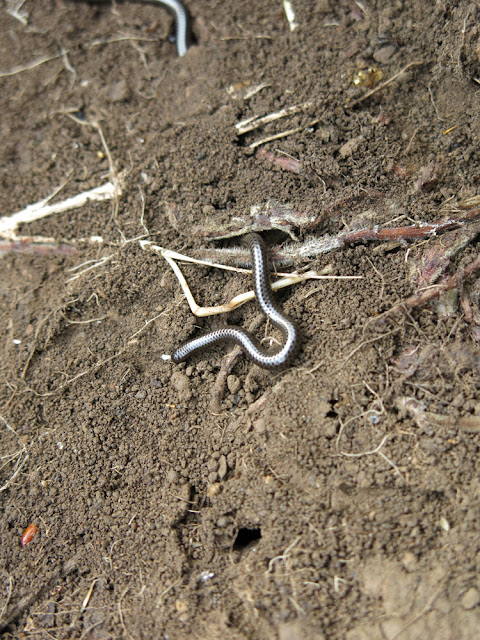The Klipriviersberg is an old mountain
range located in the southern part of Johannesburg. The suburbs of Bassonia,
Meyersdal, Glenanda, Glenvista and Mulbarton are built upon it’s slopes. A
large part of this system of hills is incorporated into a nature reserve called
the Klipriviersberg Nature Reserve.
They formed during a ‘volcanic deluge’
2 714 million years ago. During the final stages of the Witwatersrand
sedimentation, fractures developed that caused basalt magma to erupt from the
mantle and stop the Witwatersrand sedimentation by burying the river systems in
the vicinity. This continued for about six million years and in this time the
lava covered an area of over 100 000 km2 and reached a thickness of
2 000 metres.[1]
The Koppies that make up the
Klipriviersberg are made up of Basalt and Andesite. If you stand in northern
part of the reserve and gaze towards the city you can see that the
Klipriviersberg’s rocks are different to the conglomerates that make up the
rest of Johannesburg. [2]
The koppies that comprise the Klipriviersberg system are
very familiar to me. Growing up in the south of Johannesburg, I spent many
hours of my childhood in the veld; playing and looking for snakes and scorpions
and just enjoying being outdoors in general. Today the koppies have not lost
their appeal and I walk in the Klipriviersberg Nature Reserve as often as I
can.
The Klipriviersberg has some interesting human history, for
an overview the Klipriviersberg Nature Reserve’s website has some details. The
history of the reserve is summerised on the nature reserve’s website in the
following way:
Stone-age
man must have had a presence in the area because artifacts relating to them
that have been found in the reserve and this seems to indicate that they used
the reserve as a hunting ground. The Sotho speaking Tswana people lived and
farmed in the area from 1400 and after they had abandoned their villages in
1750, a “voortrekker” farmer named Sarel Marais occupied the land in 1850, when
he and his family bought the western section of the farm Rietvlei (http://www.klipriviersberg.org.za/index.php).
There is another minor historical detail about the reserve
that was recorded in Charles van Onselen’s book Small Matter of a Horse, where he says that in the early days of
Johannesburg, Nongoloza and his band of thugs had a hide out in the Koppies of
the Klipriviersberg.[3]
Today the koppies are a good place to walk and observe
nature. There are many birds, mammals, different species of plants, many
insects and some interesting reptile species. Here are some images of the
reserve:
Platyoides
Gnu
Lily weevil
Opistophthalmus pugnax
Uroplectes triangulifer
Epilachna dregei
[1]
McCarthy, T and Rubridge, B. 2005. The Story of Earth & Life: a southern
African perspective on a 4.6-billion-year journey. Random House Struik: Cape
Town. pg105.
[2] Just
to the north of the reserve, from the Mondeor hills, lie the quartzites and
conglomerates of the upper Witwatersrand system dipping south underneath the
lavas, and to the south of the reserve, beyond the Klip River lie the Dolomites
of the Transvaal system. Both the Wits and Transvaal systems were laid down as
sediments in shallow seas or deltas and were originally laying flat. They were
pushed up by the granite dome to the north of Johannesburg (http://www.klipriviersberg.org.za/index.php/geology).
[3]
van Onselen, C. 1984. Small Matter of a Horse: The Life of
'Nongoloza' Mathebula, 1867-1948. Ravan Press:
Johannesburg.










No comments:
Post a Comment